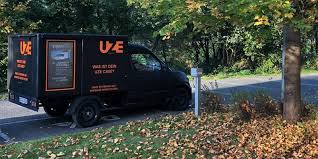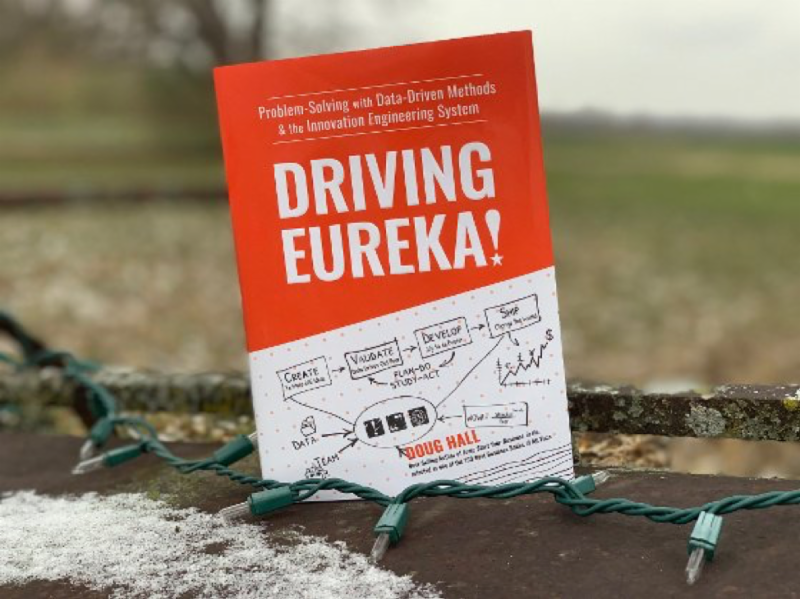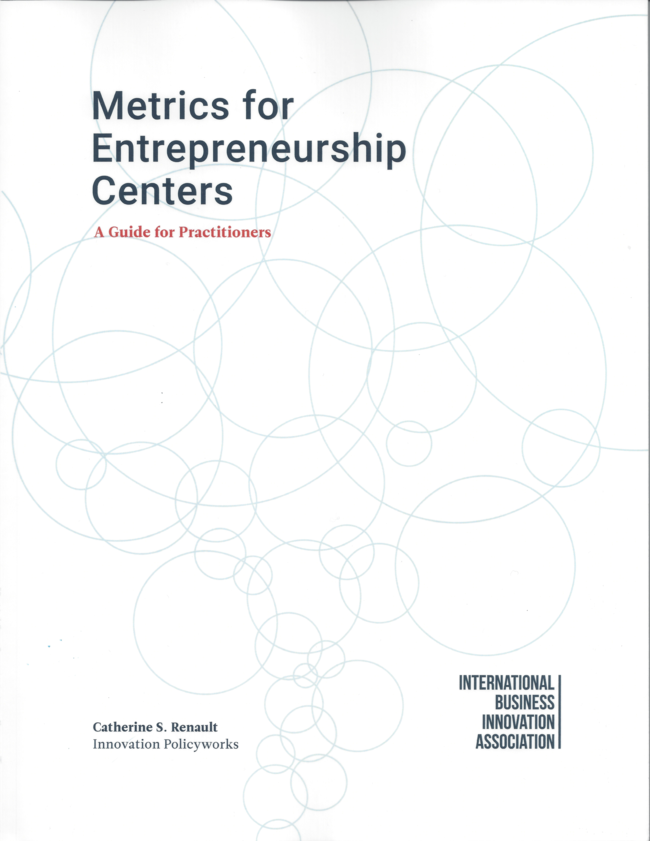|
|
|
Notes from Innovation Policyworks

A recurring theme in today's economic news and this issue is that places that invested strongly in the innovation and entrepreneurial economy
are doing well, while places that waited for the "good old days" to come back are lagging.
While it may have seemed like an audacious bet to place when some states (notably Virginia, New York, Texas, North Carolina, Ohio, and Pennsylvania) started to invest in science and technology-based economic development back in the 1980s and 1990s, the evidence is undeniably clear today that such investments paid off.
Amazon's choice of Northern Virginia and suburban New York City for HQ2 is one piece of evidence. Thirty years ago, Northern Virginia was basically a place where government employees went home to sleep. It was hard to find entrepreneurs, venture capitalists, large technology companies or risk takers. (I know, I was there!).
For those of you in the "places left behind," take heart. There are things you can do, assets you can leverage, policies you can adopt and investments you can make. If you're interested in learning more about the types of investments that these places made, you can download a complimentary pdf
HERE.
Cathy
|
Geography of Innovation is Changing
While innovation and entrepreneurship are thriving globally in large, well-connected cities, there are strategies that work for small places.
Richard Florida's at it again, with a new report that analyzed over 100,000 venture deals across 60 countries for 2005-2017. His conclusions? There are four transformative shifts evidenced in this data. (1) a large expansion in the number of venture deals and the amount of capital invested; (2) globalization - growth in startups and venture deals outside of the US; (3) the concentration of these deals in large, globally connected cities and (4) the leaders are pulling away from the rest. These are startling ideas at a time when small and rural areas in the US are just starting to think about how to tap these forces for themselves...the barriers are getting higher. (Of course, there are lots of great companies that are NOT funded by venture capital, but many great, high growth companies are.) Read Florida
HERE.
One example of what can be done is in Chile. Start-up Chile, a public startup accelerator program launched by the Chilean government in 2010 was founded to change the Chilean mindset and culture around entrepreneurship and to develop Chile into a technology hub. Start-up Chile has accelerated more than 1600 companies from 85 countries, with a survival rate of 54.5% and global sales of $700 million. Nearly $1 billion in capital has been raised by these companies since 2010, with 42 exits. The key lessons from the first 8 years? (1) Non-political, not connected with a particular administration or government; (2) global focus - recruited companies from around the world, rather than just local entrepreneurs. (55% stay in country); (3) patience - a long-term focus. Start-up Chile is equity-free, and provides significant assistance. Read their story HERE.
|
Strategies for Left-behind Places
It's no surprise that the advent of the "new economy" has increasingly rewarded places with the most talent, innovation and opportunity.
Big metropolitan areas with lots of technology companies, like San Francisco, New York and Boston, (and now, with Amazon's announcement, Northern Virginia), have flourished, accounting for 72 percent of the nation's employment growth since the recession. Employment remains below pre-recession levels in many small towns and rural areas.
Brooking's has released a new piece suggesting that a new approach to regional policy - place-sensitive distributed development - may be the way forward. They suggest:
(1) boost the digital skills of workers in the left-behind places;
(2) ensure that businesses in these places have access to capital;
(3) reduce gaps in broadband;
(4) identify areas of opportunity; and
(5) make it easier for individuals to move long-distances to better opportunity.
|

Amazon, Incentives and Economic Development
There's lots of evidence that incentives don't work, and workforce wins deals.
Predictably, the announcement two weeks ago of Amazon's HQ2 locations in Northern Virginia and on Long Island brought forth the usual handwringing over the generous incentives offered up by these localities (and others that lost). Examples
HERE and
HERE. In the end, Amazon noted that what mattered most was workforce: which places could provide the large numbers of skilled workers needed, as well as provide the amenities like transit, housing and an open and accepting culture. New York and Washington DC have the greatest concentrations of people employed in computer and mathematical occupations, according to the US Census, more than 100,000 over the number in San Francisco, for instance.
Brookings summarized the learnings from this exercise the best:
"Cities that didn't win should take up the challenge of growing a digitally-oriented workforce at scale through significant investments in training and complementary strategies to grow technically advanced jobs from within their current employer base."
In Northern Virginia, two significant announcements came right after the Amazon decision was leaked: Virginia Tech University announced a new Innovation Campus right next door aimed at driving technology education and outreach. And George Mason University announce plans for the Institute for Digital Innovation in a new building planned for their existing Northern Virginia campus. And, GMU plans to launch a new School of Computing while the Northern Virginia Community College is planning a new program to be called ADVANCE to help develop future tech talent. (New data from an analysis of over 100 million resumes show that 61 percent of community college graduates stay within 50 miles of their alma mater, and 40 percent of state university grads stay in state. So, public colleges, universities and community colleges are uniquely equipped to develop and retain talent within their states. See
SUMMARY.) And the state is planning to invest $50 million in K-12 tech education and internship funding over the next ten years. "Innovation is the lifeblood of our Commonwealth," said Governor Northam. Well said.
That still leaves a lot of places more focused on their incentive programs than on investments such as these. A new
PAPER from the Urban Institute should give them pause. Authors Brett Theodos, Aravind Boddupalli and Megan Randall studied firm migration patterns and found:
- Changes in the number of jobs in a county or metropolitan area because of net migration were essentially zero. Efforts to win over businesses with tax exemptions and subsidies may not be fiscally fruitful.
- Median household income was not correlated with higher net migration.
- Larger establishments were slightly more likely to move and establishments in professional, scientific services or manufacturing also more likely to move.
- Most job migration occurred within the establishment's own region, suggesting firms want to retain their incumbent workforces and proximity to customers and suppliers.
|
States Can Streamline Regulation to Support Innovation
Many states are working on Leaning out their regulatory systems
Pew Charitable Trust's new
REPORT profiles the efforts made in several states to reform regulations to support economic growth. The two strategies are to (1) improve the efficiency of regulatory systems and (2) partner with businesses to increase compliance. The overall objective is to help businesses navigate the regulatory processes and receive
timely and
predictable regulatory decisions.
States as diverse as Colorado, Maryland and Tennessee have successfully used this approach. Using lean tools, for instance, Colorado has looked at 100,000 processes in state government, aiming to make sure each step is necessary and as efficient as possible. In 2017, Colorado agencies reported that they eliminated unnecessary administrative tasks and saved businesses 2.3 million hours.
|
|
Five Trends for 2019
A huge tool from Innovation Engineering is the use of future trends as a spark for brainstorming and looking over the horizon. I like the website Trendwatching, and here's their five big trends for next year.
If you want more in depth, you can check out their website. The five are:
1.
Legislative brands. Progressive brands that call for and promote laws that drive constructive change and make the world a better place. Example: Patagonia's advocacy for environmental causes.
2.
Lab Rats. Human wellness and lifestyle is perceived as an engineering problem to be solved. Consumers like a test and fix approach to optimizing their health and lifestyle outcomes. Example: Nestle Wellness Ambassador. Personalized dietary and wellness advice.
3.
Open Source Solutions. Sharing and even giving away your most innovative solutions to our toughest shared problems, especially through sustainability. Example: HP and IKEA working together to reduce ocean-bound plastics.
4. Superhuman Resources. Ethical Artificial Intelligence (AI) and algorithms that deliver fair and unbiased decisions. Example: IBM services to tackle bias and increase transparency in AI services.
5. Fantasy. Consumers are seeking out Fantasy IRL (In Real Life) and play on the blurring boundaries between real and imagined. Example: The Louvre is offering Jay-Z and Beyoncé at the Louvre, a self-guided tour.
|
|
|
Hopeful Signs
Three stories of good news on climate change
Amid the almost daily drip of distressing news, it's easy to miss the good stuff. Here's a few highlighted by the great folks at Green Biz/VERGE:
- In Texas, the combination of new wind and solar electric generating capacity has driven peak pricing down by 55 percent over the last five years. Clean energy has reached grid parity, causing energy companies to postpone new gas-fired plants or ditch them altogether.
- General Motor's decision to close some plants really signals a refocus on new electric vehicle (EV) models, and moves towards electric and autonomous vehicles. While workers will need to reskill, the move is positive overall for the green economy.
- Smithfield Foods, the largest pork producer, is partnering with Dominion Energy to harness methane gas from thousands of hog lagoons to heat homes and combat climate change. Agricultural emissions account for 9 percent of the US greenhouse gas emissions.
|
|
|
"The best time to plant a tree is twenty years ago. The second-best time is today."
|
|
New to Innovation, Entrepreneurship or Economic Development?
Want to learn more about what programs work and why?
Want to understand your state/region/community and how to energize your economy with innovation?
Click
HERE for a complimentary PDF that outlines the whys and wherefores!
|
|
Innovation Spark of the Month

German startup UZE Mobility wants to let customers rent their electric vans for free! The revenue model - advertising screens on the side of the vans and data about traffic patterns and road conditions. The company's goal: Emission-free cities by 2025.
Trend-Watching asks:
Don't just sell a service, sell a vision. What inspiring vision can you present?
|
|
Offshore Wind - the Next Big Breakthrough in Renewable Energy
Turbines are turning in several coastal states.
Rhode Island, Virginia, Massachusetts, New Jersey, and New York either already have demonstration projects up and running or have signaled strong state support for offshore wind through commitments to purchase gigawatts of power at price parity with other sources of electricity.
Of course, opposition is still potent, witness the multi-year conflict over Cape Wind off Cape Cod, and Maine's Governor LePage's campaign to kill the University of Maine's significant demonstration project near Monhegan Island. Moore's Law and advances in technology continue to make this a price competitive opportunity to generate emission-free electricity. Read about the existing projects
HERE and
HERE.
|

I've just ordered a case of the books, and will give one to the first ten folks who email me!
Doug Hall's seventh book, Driving Eureka! was released last week and it's terrific! It's a compilation of everything that Doug, the team at Eureka Ranch, and the Innovation Engineering Pioneers (including me :)) have learned about how to use data and systems to increase the speed and reliability of innovation. Innovation isn't a random event or process; it can be learned, systematized and replicated. Over 26,000 innovations representing $16.8 billion in revenues have been created using the system that Doug and the team have refined over the years. Now all the secrets are in one place.
|
|
Quick Links
Maine's Knowledge Economy: A Snapshot 2017
(2018 report coming in January)
|
Metrics for Entrepreneurship Programs
 Have you been wondering how to convince your stakeholders that your program is performing well? My book on evaluating entrepreneurial programs, written for the International Business Innovation Association (iNBIA), is available on its website. The basics apply to any economic development program. Check it out HERE. Have you been wondering how to convince your stakeholders that your program is performing well? My book on evaluating entrepreneurial programs, written for the International Business Innovation Association (iNBIA), is available on its website. The basics apply to any economic development program. Check it out HERE.
|
|
Happy Holidays
 I admit it. It's highly unlikely that I'll stop partying the week of Christmas to send you a newsletter, and even more unlikely that you'll read it! So, see you in 2019! I admit it. It's highly unlikely that I'll stop partying the week of Christmas to send you a newsletter, and even more unlikely that you'll read it! So, see you in 2019!
|
|
|